Our Getting Ready to Read Unit of Study will be a great way to start your reading workshop in your kindergarten classroom.
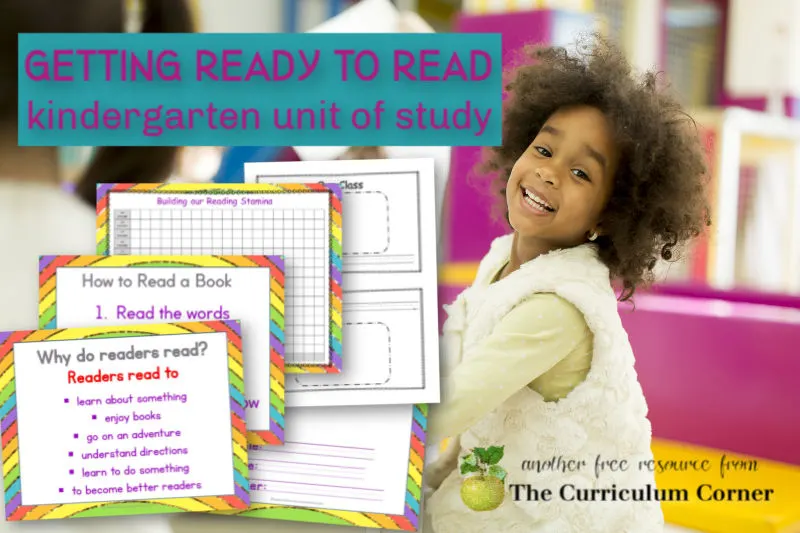
This is a free unit of study for your reading workshop from The Curriculum Corner.
This Getting Ready to Read unit of study is designed as a launching unit of study for your kindergarten reading workshop.
Why Should I Begin with this Unit?
The goal of this Getting Ready to Read unit is to help children to love books and reading.
While some of our little ones come to us with lots of lap time and already value and adore books, we know that many of them may not have had those experiences.
Either way, we also want students to begin to understand that reading is the pathway to learning amazing things.
The lessons we are sharing are simple. For kindergarten students, we want to make sure to keep the lessons short so that students can stay engaged for the entire lesson.
Getting Started with your Unit of Study
To start off your unit, be sure to share some of your favorite books. Think about titles children will relate to. Also be sure to include a variety of text types.
For the students who come to you as readers already, be sure to encourage them to grow from where they are. This might mean they need a separate small group instruction time in addition to your mini-lessons even this early in the year.
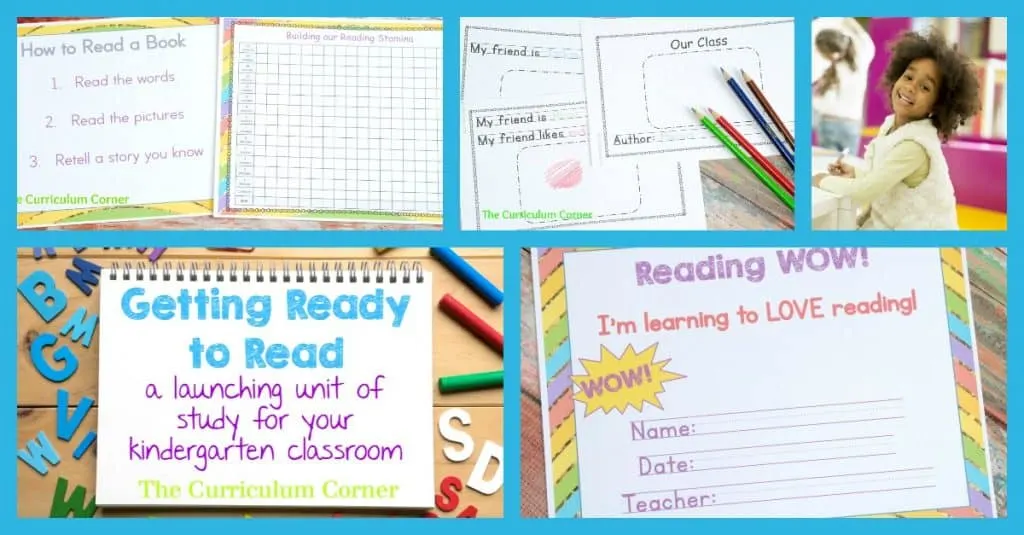
Create collections of emergent readers that will be of high interest, books with repetitive or predictable texts, and books that have words that the students might be more familiar with (colors, numbers, animals).
Below you will find some suggested mini-lessons for your Getting Ready to Read unit.
To be truly effective, these mini-lessons should be followed by a short time of independent reading. Even a few minutes is ok to begin with!
The lessons should also be accompanied by additional phonics instruction, word study and writing throughout the day.
If the resources that accompany these lessons involve reading/writing that is too difficult for your students, you may choose to use them only for your mini-lesson or adapt the idea to suit the needs of your students.
They might also serve well in a first grade setting. As always, tailor the lessons to fit the unique and specific needs of the students you are teaching.
Getting Ready to Read Unit of Study
Lesson 1: Why Readers Read
- Begin your unit by helping your students to realize there is a purpose for reading.
- Pose the question “Why do you read books” and discuss their answers.
- Share the “How to Read a Book” anchor chart. Read the sentences one by one and talk about what they mean. Your goal is to help children see that they can read a book even if they do not know the words.
Lesson 2: What Reading Workshop Looks Like
- Procedures for Readers’ Workshop are important. Getting your students to understand and follow the procedures might take some time because of their age. Tt will be worth the time, practice (and your patience) in the end. Your workshop will run more smoothly with simple procedures in place for students.
- For this lesson, talk about the importance of quiet, whisper voices, and reading the whole time.
- Send students to read books independently, and afterwards gather to talk about what went well.
- Have students draw pictures on our “What Reading Workshop Looks Like” page and display these to serve as a reminder.
FUN IDEA: Throughout the week, take pictures of each student reading, print them and attach them to cards. Students can add their name and they can serve as a personal visual reminder of what your expectations are for what reading workshop looks like. This can also be their name tags for their reading spots.
Lesson 3: Choosing Books
- Before this lesson gather a stack of assorted books to share with your students. Most of the books should be of high interest for children at this age. Include a few that might not fit the needs of your students such as a chapter book or much more difficult book.
- Gather students and hold each book up for the class.
- Show them the cover and flip through the pages.
- Have students raise their hand if they think they might be interested in the book and have them share why they are interested.
- Talk about how to choose books that will be ones that they will want to read during independent reading time.
Lesson 4: Before Reading
- We want students to learn to look at and preview books before taking them to read.
- One fun way to illustrate how to preview a book is to find a big book that students will love. Gift wrap it in a box with fun paper and a large bow on top.
- Gather your class and ask them what they might do if they saw a package like this sitting somewhere.
- Though they might immediately say that they would unwrap it, guide them to think carefully. How would they know it was for them? Where was the gift located? Was their birthday coming up?
- After some discussion about looking for important clues about the gift, guide them to some other ways they might determine if gift was meant for them. They could use the gift tag to see who the gift was for. They might pick it up to see how much it weighs and maybe even shake it a little to see what it sounds like. Finally, open the gift together and show them the book.
- Tell your students that a book is just like a gift and should be carefully “previewed” to make sure it’s just right for them before reading it.
- Model how they should look at cover, flip through pages, and make predictions. Talk about the title and author, what those terms mean and where the names are located on the cover.
Lesson 5: Handling Books
- This lesson is meant to model for students how they should handle the books that they read. Use a big book to illustrate the concepts of reading from front to back and left to right. Show students how to point to words, turn pages and how to move from one page to the next with their eyes and hands.
- This is also a great opportunity to share your expectations for how they will treat your classroom books.
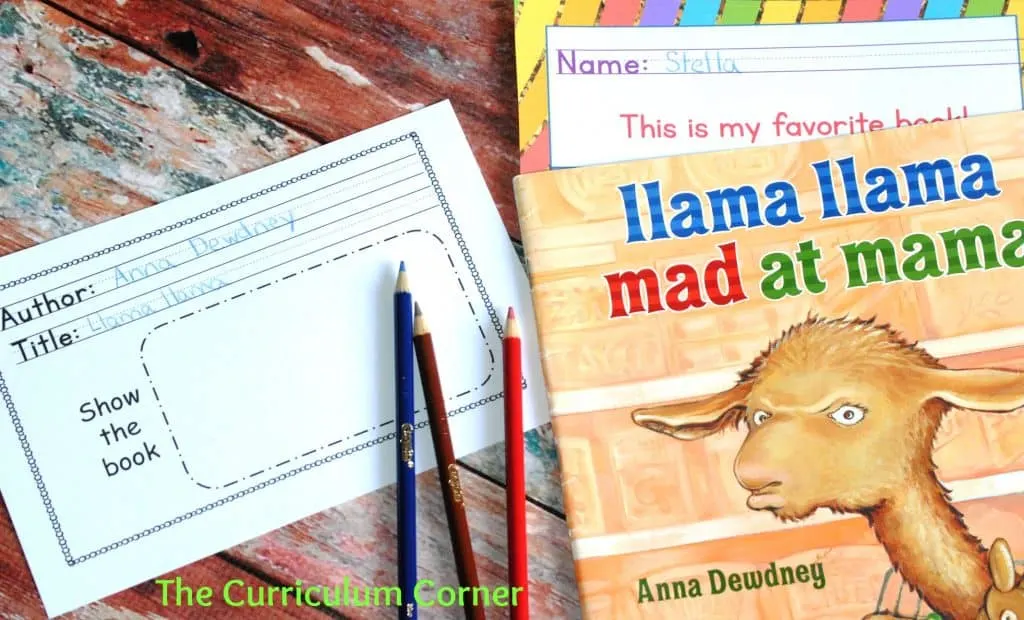
Lesson 6: How to Read a Book
- We want our most emergent readers to understand that “reading” doesn’t have to always mean decoding words and saying the sentences on the page.
- We want them to understand that reading might mean that they read the words, but it can also mean that they read the pictures or use the pictures to tell a story they already know.
- Use the “How to Read a Book” anchor chart to share this concept with your students and then model how to do each of things listed on the anchor chart.
Lesson 7: Pretending to Be in the Book
- A great way to help students to begin to visualize during their reading is to have them pretend to be the characters in the book.
- Encourage lots of pretending or acting by reading a book and asking for volunteers to show or act out what is happening.
- You could also have students draw pictures of themselves being the character or even with the character they are reading about.
- Use the graphic organizer called “Draw a picture to show you in the book” as a way to get students to visualize what is happening in stories.
Lesson 8: Building Reading Stamina
- Just as we show students that there are procedures for Reader’s Workshop, we also want them to understand that they will need to start reading for longer time periods.
- Help them to create easily attainable goals by using the Reading Stamina graph.
- Time the students on one day of their independent reading to see how long they can read without getting restless or fidgety.
- Share the number of minutes that you observed and mark the time together on the graph.
- Tell them that the next day you want to see if they can increase that time by one or two minutes.
- Let them know that the goal (for now) is that they will be able to read for up to 15 minutes.
- Each day record the time that the class was able to independently and quietly read so that they can see their reading stamina beginning to build.
Lesson 9: Studying Names
- Students at this age will also find it fun and engaging to be able to read the names of the peers in their class.
- Use the editable template provided to create a chart of the student names in your class.
- Create a poster for the mini-lesson and spend some class time displaying the chart and asking students to point out and read their own names in front of the class. (This may be something you do every few days for a while.)
- Discuss the beginning letters of each name and other interesting characteristics (double letters, similarities, etc).
- Make one copy of the chart for each student and include it in their own personal book bins so that they can practice reading the names on their own. (This may also be a part of your word work time.)
- Another idea is for you to make a flip book with student pictures next to their names for a shared book for the class to read.
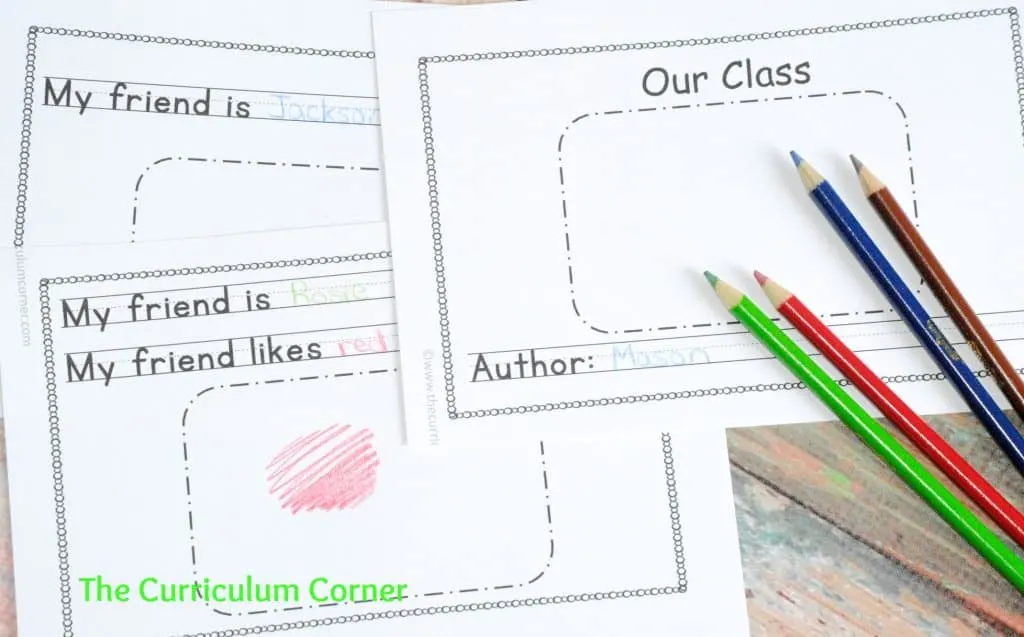
Lesson 10: Make a Simple Book
- Hand in hand with reading is always writing. We want students to begin to think of themselves as authors as well as readers.
- One way to do this is to have them create some simple books that they can “write” and then read again and again.
- Use the template pages provided for students to use the names they are learning to write about and illustrate books about the class.
Lesson 11: Using What I Know to Read Books
- For this lesson you will need to have concept books about colors, the alphabet, shapes, etc to share with your class.
- Use these during your mini-lesson to talk about how students can use what they know to read them.
- They can read the color words because they can see the colors and match them to the words. They can predict specific words because they start with particular letters and have pictures to go with them.
- Model for students how to use what they know to help them read books.
Lesson 12: Using Words I Know to Make My Own Book
- Use the concepts of the previous mini-lesson to have the students make another simple book to practice their writing/reading skills.
- Use the “Colors” anchor chart to show the class how to create their book pages.
- Emphasize that they can be readers and writers by just using words they already know.
- We have provided two sets of page templates for this lesson. The first has the students writing the color word on the line (using the anchor chart for reference if needed).
- The second has the color word already written in the sentence. In both sets you can have the students simply color the entire box the color indicated, or they can think of something that is that color and draw it in the box.
- Once these pages are finished and stapled they can be added to the students’ individual book tubs for future reading.

Lesson 13: Looking for Patterns in Books
- Our earliest readers can also begin to read by enjoying texts with repetitive phrases or sentences.
- For this lesson choose one or two of your favorite repetitive text books.
- Once your students catch on to the repetition and pattern, have them predict the words you are about to read.
- Point to words to show them how they can use patterns to help them read some of the books they want to enjoy.
Lesson 14: Listening for Rhyming Words
- For this lesson it is best to try to find a big book with really good rhyming pairs.
- If you can’t find a big book, then you might think about finding a way to display the pages of the book in a bigger way so that students can see them as you read (Smart Board or poster).
- Tell students they need to listen for rhyming words as you read the story aloud.
- You might want to think of having them do something fun, like put their hands on their head or give a thumbs up each time they hear a set of rhyming words.
- Place post-it notes, an erasable highlighter or other means to mark the rhyming words in the text.
- When you are finished with the book, revisit the pages where the words were marked and create a chart of the rhyming pairs.
- Read them aloud several times with the class and let them know that rhymes can also help them to predict words they are reading.
Lesson 15: Meeting with My Teacher
- You will want your students to understand what you will be doing while they are independently reading during reader’s workshop.
- For this lesson model a simple reading conference for your class. You could have an instructional assistant or your principal to help you model what a conference looks like or you might choose to have a student come up and sit with you for this.
- Another fun idea might be to enlist the help of an older student that you’ve had in your classroom in the past!
- Older students might love to come back to their kindergarten class to visit and help with the new readers you are teaching. 🙂
- You might start your conferences with the question “How’s it going?” (thank you Carl Anderson!) and give your readers the chance to tell you how they think they are doing as readers.
- Then you can model more questions such as “What are you doing as a reader today?” or “What made you choose this book?”
- However you conduct your conferences, you just want your students to get used to the fact that you will be talking with them about their reading as often as possible.
Looking to learn more about reading conferencing? Try our guide to help you get started:
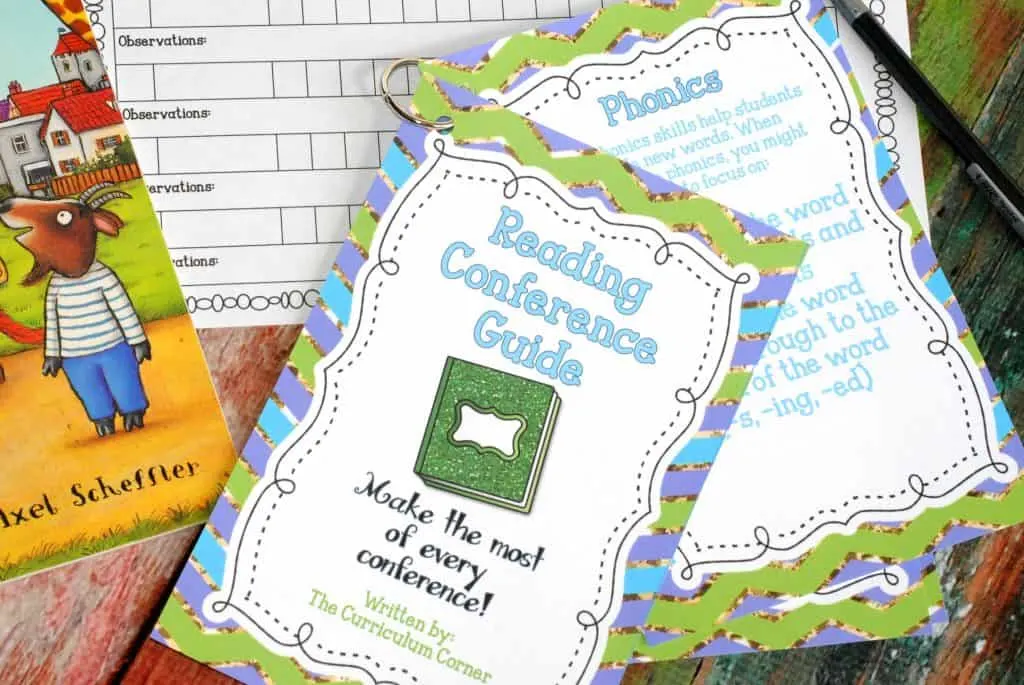
Lesson 16: Retelling a Story
- Students need to begin to understand how to retell a story in sequence with the most important parts included.
- This could take a lot of modeling and practice to even get some of them through the beginning stages of this skill.
- To help them we want to teach them some guide words that will help them to remember the sequence, but also to help them focus on only the important parts.
- The “Retell the Story” graphic organizer uses the words “first”, “then” and “last” to try to give students a beginning framework for their retelling.
- To start with you may want to show them the graphic organizer, retell the story orally and then draw pictures in the boxes for students.
- For those who are ready you might decide to label characters with their names or write a few words/short sentence in the box to help describe the picture.
Lesson 17: Reading Familiar Sentences
- For this lesson you will want to use a story the students are familiar with – one that you have read a few or even several times. It will be best to have a story with simpler sentences.
- Type the sentences from the book and print them. Cut out each sentence and give one to each student. It is ok for several students may have the same sentence. This will allow them to help each other read if necessary.
- Students then use their knowledge and remembering of the story to read the sentences aloud.
- Next provide each student with a sentence strip so that they can write the sentence on the strip with a marker.
- Have them practice reading the sentences they wrote several times before cutting the words apart to put in a baggie.
- The next step (for those who are ready) would be to put the sentence back together in the correct order. This might involve the students looking at the original sentence to help if necessary.
Lesson 18: Acting Out a Story
- Most children this age have an active imagination and like to act things out or pretend that they are someone or something else.
- For this lesson, we want them to use a character in the story and act out something that happened in the story.
- Gather students and read a book aloud. Then together choose a character and discuss something funny, memorable, important the character did.
- Model how to draw a picture of that character on the graphic organizer provided.
- After you draw the picture, stand up and act out what you drew in front of the class.
- Once students understand what to do, you might want to then read another familiar book before having the students do this on their own.
- If you feel they aren’t ready for this, you may choose to model this a few more times until your students can do this with a partner.
Lesson 19: Reading with a Buddy
- One goal that we have for our older students is that they are able to sit down with a teacher or peer and talk about books they are reading.
- At a young age, we need to start with the basics and model how to tell a partner the title and author of the book to get started talking about it.
- To get the reading conversations started have students copy the title and author of a book they are reading and then draw a picture of the cover of the book. They can use this as a base to start their reading conversations.
- Once you feel that they are able to successfully share the author, title and a picture they have drawn, then you might want to take it a step further and tell the students you also want them to share a favorite, funny or memorable part of their book as well.
- Again, modeling is the best way for students to understand your expectations. Pull up a student and have a conversation in front of the rest of the class.
Lesson 20: Being a Good Listener
- This is a very simple lesson, but one that may be important in your particular class.
- For this lesson ask your class what it means to be a good listener. Listen to their responses and talk about them.
- Guide them to also think about these things – look at the person talking, don’t interrupt, focus on what the speaker is saying.
- After the discussion, send them off with partners to practice what you discussed.
- Walk around the room to let students know if they are showing the traits of a good listener.
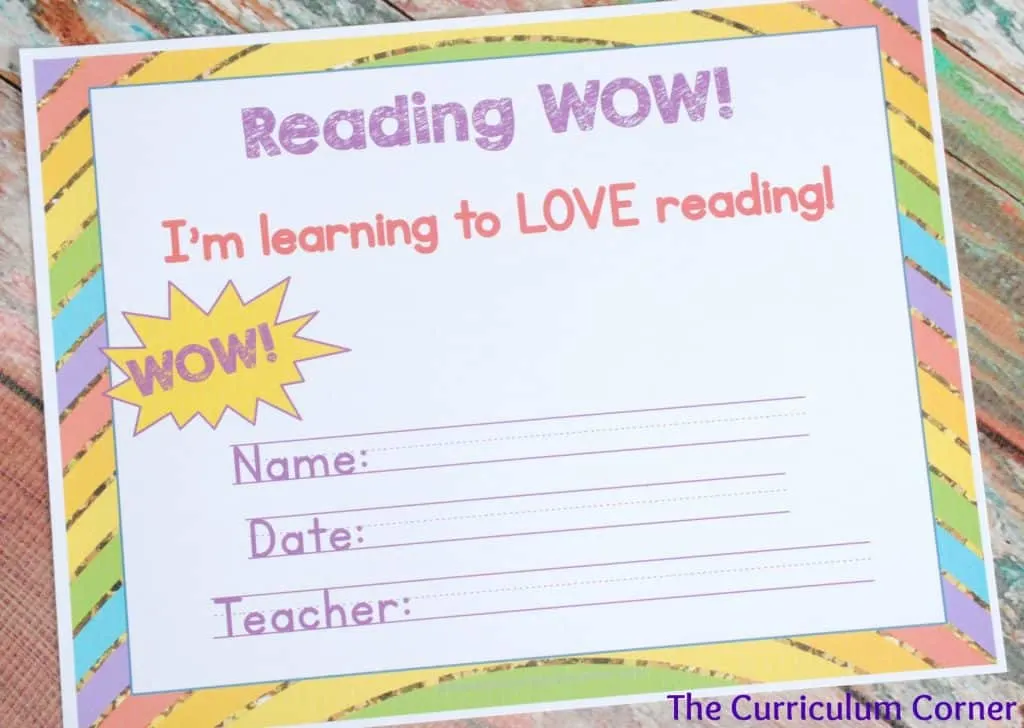
Lesson 21: My Favorite Part
- We want our students to be able to share their love of reading with peers. Give your students the chance to share their favorite books with the class.
- Print, cut out and laminate the “This is my favorite book!” bookmarks for all of your students and talk about how to use them.
- If they read a book that is wonderful and want everyone to know, they can choose to put their bookmark in the book and put it back on the shelf.
- As students are looking for new books to read they can look for the ones that have bookmarks in them and will know that someone else really enjoyed the book.
- Think of this as the very beginning stages of book recommendations. Later in the year, you might want to have your students write something specific about the book that they loved on the backs of the bookmarks.
Lesson 22: Reading Celebration
- We believe every unit of study in reading can end with a celebration of the learning that has taken place.
- The celebration can be as simple as talking about the learning and passing out certificates or it can involve guests and snacks to show the learning that took place during the unit.
- We have created our “Reading Wow” certificate for you to pass out to your students or simply send home to parents.
- Whatever you decide, be sure to take some time to wrap up the unit and discuss what the students learned.
**We have also included a blank anchor chart with the rainbow background in case there are lessons you feel you need to add and you want to keep your decor in sync with the rest of the unit.
Download the complete free unit here:
Here is our editable file for class names: Editable Names File
(You will want to download the font KG Primary Penmanship.)
Thank you to Glitter Meets Glue Designs for the fun rainbow glitter background.
As with all of our resources, The Curriculum Corner creates these for free classroom use. Our products may not be sold. You may print and copy for your personal classroom use. These are also great for home school families!
You may not modify and resell in any form. Please let us know if you have any questions.

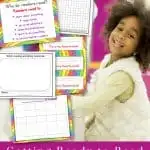
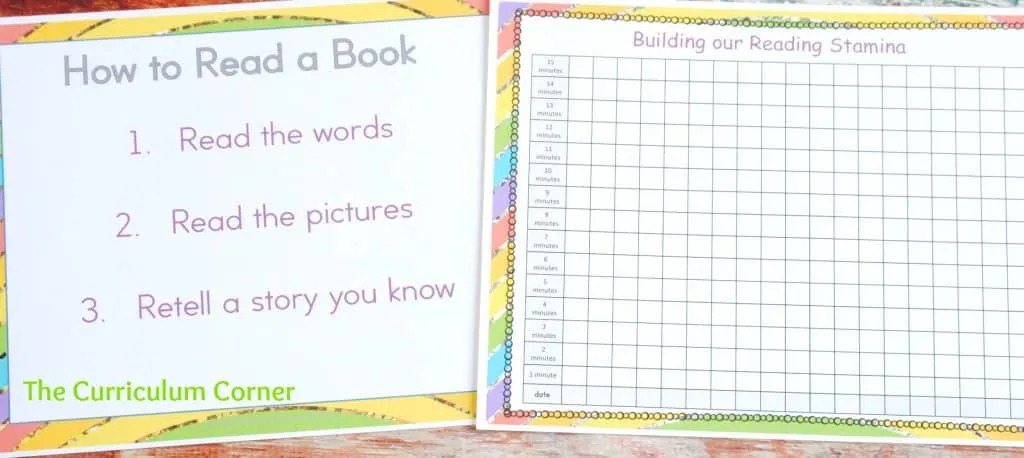
Write a Rhyming Word Task Cards - The Kinder Corner
Wednesday 20th of November 2019
[…] Getting Ready to Read […]
Mary Ordille
Sunday 22nd of July 2018
This says it is a powerpoint that is editable but the download is a pdf only file. Is there an editable powerpoint version?
Jill & Cathy
Wednesday 22nd of August 2018
So very sorry, Mary! This wasn't meant to be an editable resource. We apologize for the mistake.